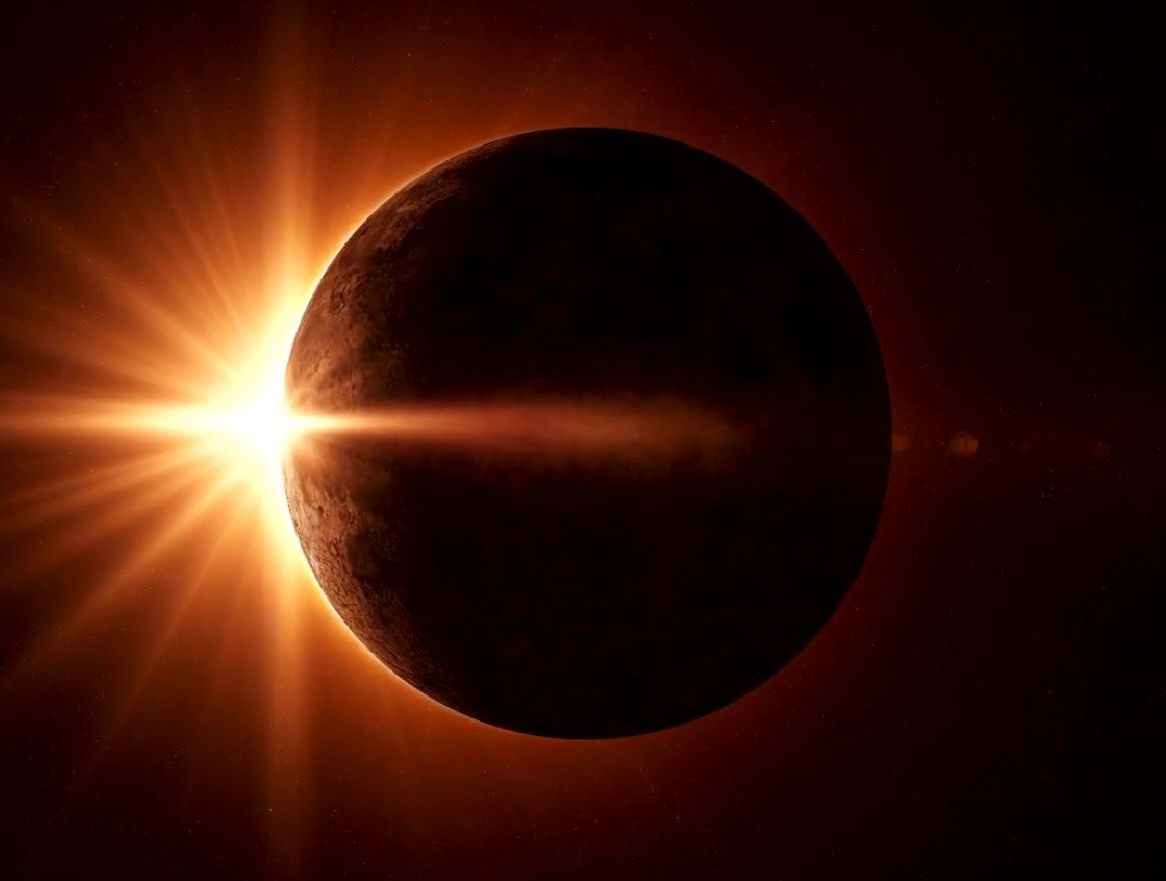The Eclipse and your Eyes, the facts

Blog vol 4.42. The Eclipse and your Eyes, the facts.
There are a lot of misconceptions about the upcoming Total Solar Eclipse, happening Monday in most parts of central to eastern North America.
Last total solar eclipse visible in Hamilton: January 24, 1925.
Soon: April 8th, 2024.
Next: October 26, 2144.
So don’t miss it!
In our solar system, there are over 200 moons that orbit 6 major planets and the Earth’s moon is the only one that is the right size and the right distance between the sun and Earth to produce a total eclipse. A special shout out to Clint and Karen for showing us, through their telescope, the shadow of Ganymede (largest moon in our solar system), which appeared very small as it transited across Jupiter, amazing, but no total eclipses there.
But is it safe to look at it? Can looking at the eclipse hurt my eyes?
No, it is not safe and yes, it can hurt your eyes.
Since we were little kids, we have always been told to not stare at the sun. For a fleeting second, it is permissible, but actually cannot be helped especially when the sun is on the horizon. But do not stare at the sun. Remember when you were a kid and took a magnifier outside and you put it in the sun and then focused the sun’s rays on some dry leaves or a piece of paper? The ultraviolet (UV) light in the sun’s rays was concentrated on one point and the energy was enough to incinerate paper. The same thing can happen to the eye.
When UV light from the sun enters the eye, it’s focused through the lens and cornea of the eye and onto the retina at the back of the eye. The retina is the light-sensitive tissue lining the inner surface of the eye. Once absorbed into the retina, the UV rays result in the formation of free radicals. These free radicals start to oxidize the surrounding tissues. They ultimately destroy the rod and cone photoreceptors in the retina. The oxidative damage is referred to as solar or photic retinopathy, and unfortunately, it can be permanent.
Solar eclipse glasses are necessary.
Do not look at the sun through binoculars or any other magnifying device. This actually makes the damage worse, because the affected area of burning becomes enlarged.
What you will see on Monday, if we get a sunny sky, is the shadow of the moon coming across the sun and gradually coming to a position of totality with the greenish corona peeking out of the edges of the moon’s umbra. Just before and just after totality you should be able to observe the diamond ring effect, where the corona gets a little brighter at one point and looks remarkably like a diamond. I cannot help but think about my wife’s parents, Hubert and Irene, who are celebrating their Diamond Anniversary right at this time. The heavens are putting on quite a show for a very special couple.
Til next week,
The good doctor
P.S. We still have a limited supply of solar eclipse glasses, come pick up a pair at Burlington Eyecare.






